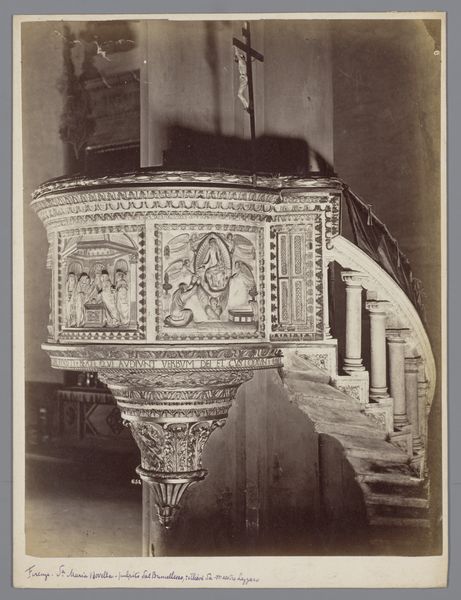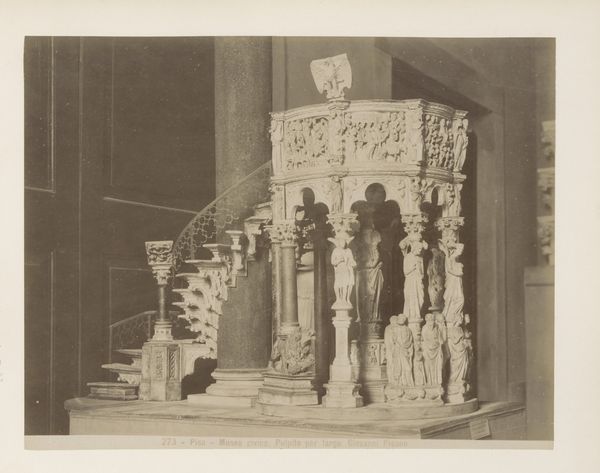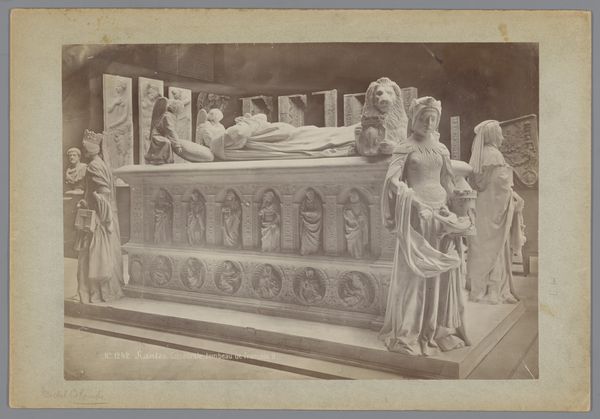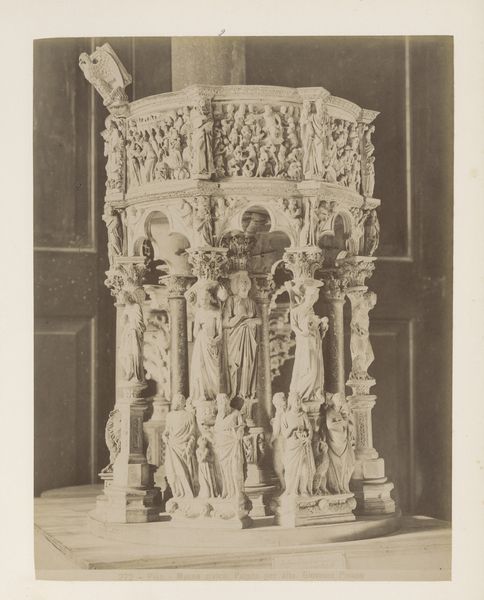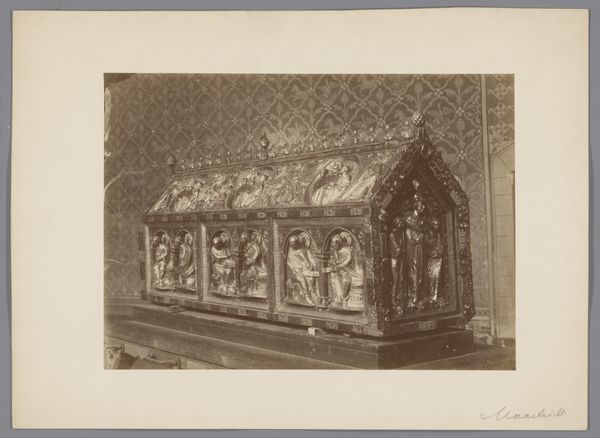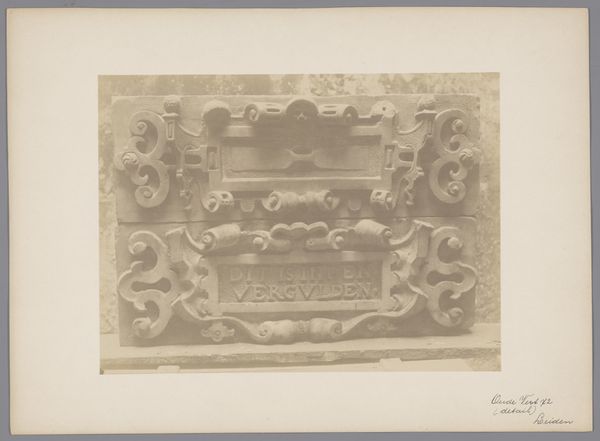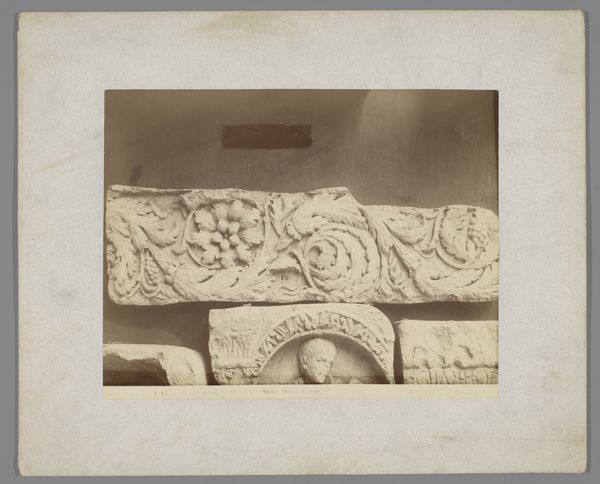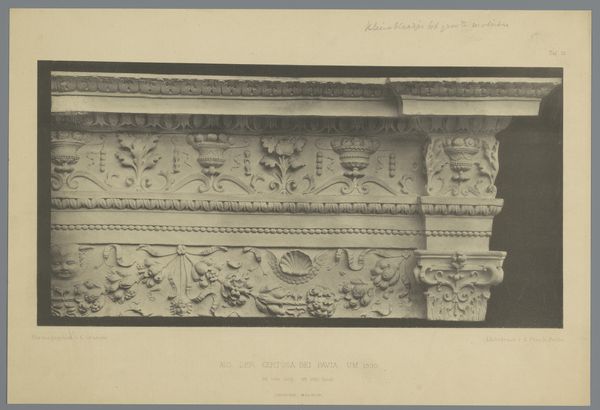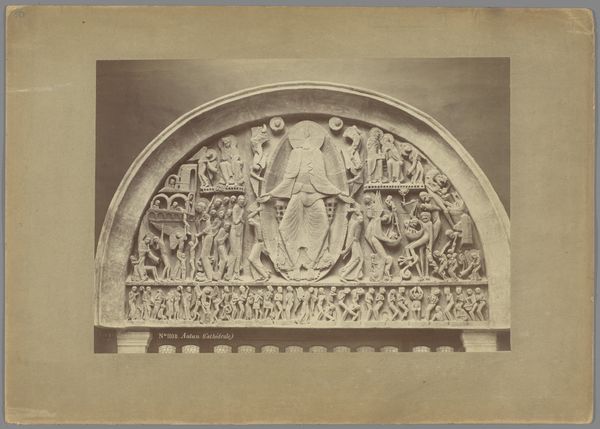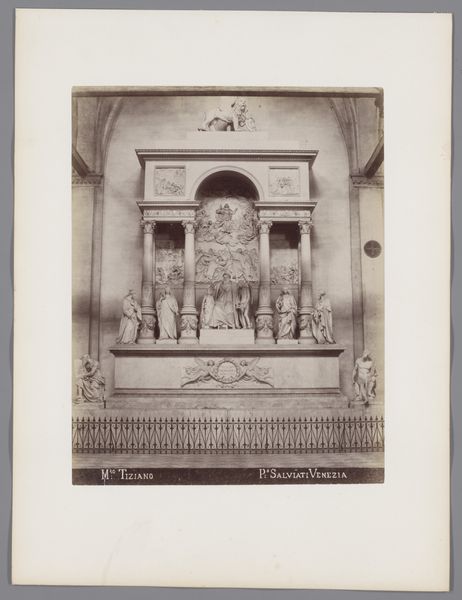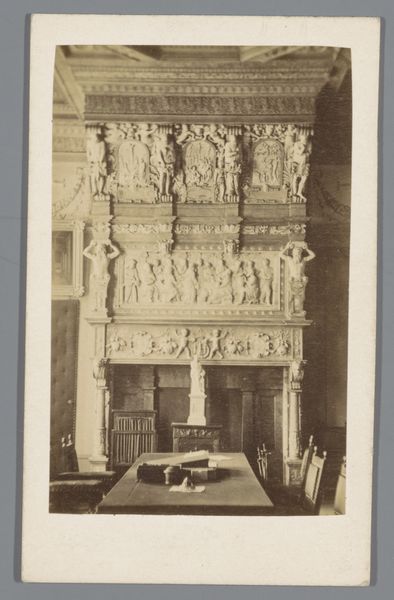
photography, sculpture, albumen-print
#
portrait
#
photo restoration
#
photography
#
ancient-mediterranean
#
sculpture
#
19th century
#
history-painting
#
albumen-print
Dimensions: height 201 mm, width 259 mm
Copyright: Rijks Museum: Open Domain
Editor: This photograph, taken by James Anderson sometime between 1857 and 1875, depicts the Sarcophagus of Saint Costanza. I'm struck by the way it combines ancient sculptural forms with what was then a relatively new photographic medium. It feels like a dialogue between past and present. What do you see in this piece? Curator: I see a fascinating intersection of power, faith, and representation. The sarcophagus itself, originally from the 4th century, speaks to the Roman imperial elite and their complex relationship with early Christianity, especially when considering Saint Costanza was the daughter of Constantine the Great. Notice the figures harvesting grapes—while seemingly secular, it’s now understood to be linked with the imagery of Bacchus but reinterpreted in a Christian context referencing the wine of the Eucharist. Editor: So, the photograph isn't just a document, but an interpretation? Curator: Precisely. Anderson's choice to photograph this object within a museum setting – note the Greek-style statue in the background – subtly reinforces a narrative of Western art history and ownership, which continues to be contested. Who gets to claim and represent history is a key question. Consider that photography itself, in the mid-19th century, was rapidly transforming notions of evidence, authenticity, and memory, furthering the complexity of cultural imperialism at the time. Does this new information change the mood of the photograph for you? Editor: It does. I initially saw it as a straightforward historical record, but understanding the layers of cultural and political context, it makes me think about how museums create specific narratives and who benefits from them. Curator: Exactly! Recognizing these interwoven narratives enables a more critical engagement with historical artifacts and photographs, as well as, I hope, an investigation into our own preconceptions. Editor: This has been so insightful, thank you!
Comments
No comments
Be the first to comment and join the conversation on the ultimate creative platform.
